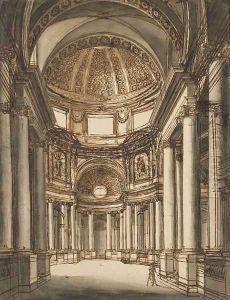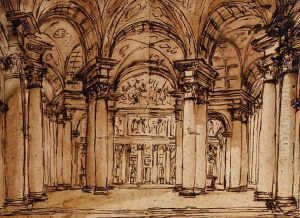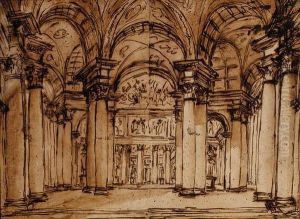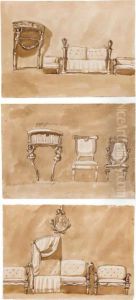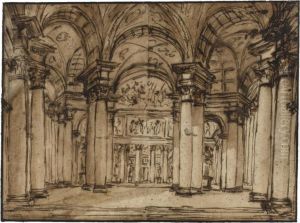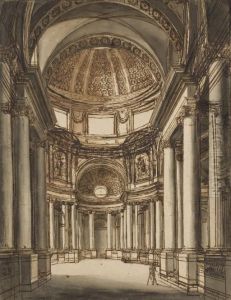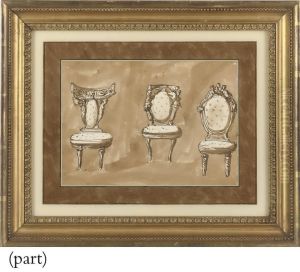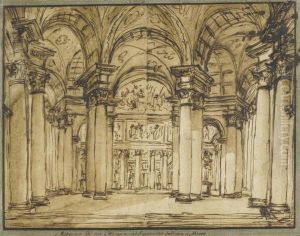Giuseppe Barberi Paintings
Giuseppe Barberi was an Italian draughtsman and engraver, renowned for his detailed architectural drawings and vedute, which are views or landscapes of Italian cities, especially Rome. Born in Rome on February 12, 1746, he spent most of his life in his native city, which served as the main source of inspiration for his work.
Barberi showed an early interest in art and architecture, and his talent was recognized and honed under the guidance of his uncle, Pietro Antonio Corsi, who was also an architect. Barberi's skills were further developed as he studied at the Accademia di San Luca, which was the premier academy for artists in Rome. He became particularly adept at capturing the grandeur and intricacies of Rome's urban landscape, which was undergoing significant changes during his lifetime due to the Neoclassical movement.
Though not as well-known as some of his contemporaries, Barberi's work was highly regarded for its precision and detail. He became a sought-after artist for patrons desiring accurate and decorative records of Rome's architecture and ruins. In addition to his vedute, Barberi also created designs for interior decorations, altars, and other architectural projects, reflecting the versatility of his skills.
Barberi's legacy is largely found in his drawings and etchings, which are valuable records of the urban and architectural history of 18th century Rome. His works are preserved in various institutions, including the Museo di Roma, and they continue to be studied for their historical and artistic significance. Giuseppe Barberi passed away on February 7, 1809, in Rome, leaving behind a rich portfolio that contributes to our understanding of the period's art and architecture.
